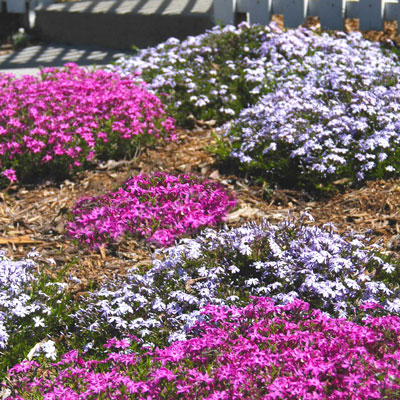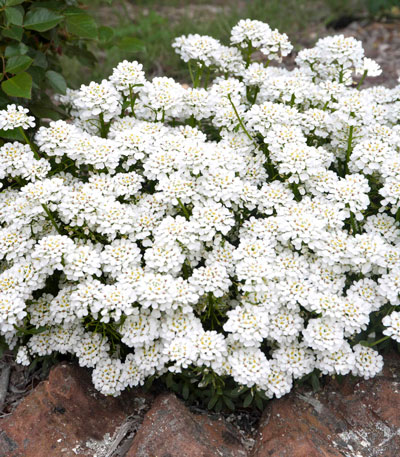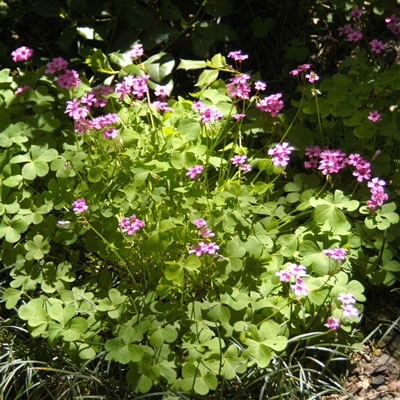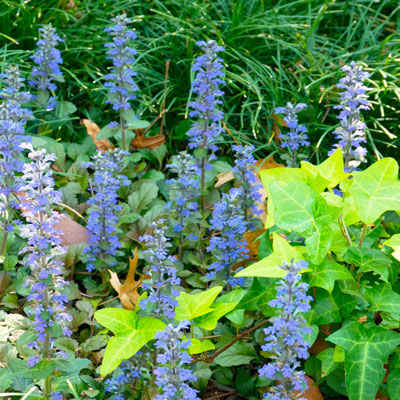Jewels of the Spring Garden Border
“Huge and flamboyant” isn’t always best. That’s what I told my wife the day I proposed. Hey! I was in graduate school, and I was broke. That tiny diamond looked huge on my budget.
That same thing applies to the short plants we use to border our perennial plantings. There are many, but here are a few of my all-time favorites that are suited to most parts of Texas.

Thrift…
“Hot, hot pink.” That’s the best way to describe this flat little spreader. It does best in full sun, growing to 4 inches tall and 18 or 24 inches across. It covers its foliage with mats of little pink pinwheels (white form also available), and it keeps blooming for several weeks (longer than many perennials).
The only downside with the creeping phlox is that its leaves are a little bit prickly. They don’t have thorns or spines, but they’re sharply pointed. As a result, take extra care to eliminate bermudagrass before you plant thrift.
Louisiana phlox…
If your color scheme drifts more toward lavenders in spring, perennial Louisiana phlox is equally handsome. All of these creeping types of phlox are great spilling over retailing walls. That’s probably a more practical use than filling an entire bed with them. A bed like that would be beautiful for a few weeks each spring, but unattractive and difficult to keep free of weeds the rest of the year. You only need so much hot pink or lavender in your plantings, anyway.

Candytuft…
There is a purity to this little beauty. Crisp, clean white flower clusters are somewhat similar to those of sweet alyssum. It stays in bloom for several weeks each February and March, and it will produce sporadic blooms through the rest of the season as well.
Candytuft tucks into small garden niches with grace. Use it to spill out of a stack of rocks in the garden. Plant it where it can cascade over red sandstone retaining walls for a nice contrast of colors. It grows to 4 or 5 inches tall while it’s blooming.

Oxalis…
This is another throwback plant that Texans have been growing as long as any of us can remember. It makes a lovely low border plant, but unlike the other plants we’re discussing, it clumps instead of sprawling. Pink oxalis grows to be 10 inches tall and wide. It dies back to the ground in summer and especially in winter, only to come back even stronger with its next growing season.
Oxalis grows from small bulbs, but you buy it in nurseries this time of year in 4-inch pots or in quart or gallon containers. Try the purple oxalis as well. I had some that I’d bought for a hanging basket years ago, and before I got them planted, they had sown themselves into my beds. I went ahead and planted the rest, and I’ve been thrilled with the look ever since.

Ajuga…
Bright blue flowers are few and far between, but this is one that’s readily available and waiting for you. It’s a handsome plant along shrub and flowerbed borders. It does try to spread, so you’ll want some means of containing it, either by edging or wall stones.
Ajuga plants bloom on 6-inch spring spikes, and there is no shade of blue that is any more cheering. White and pink forms are available, but they miss all the novelty of having a flower that really is a true blue.
Ajuga must have shade, and it requires highly organic, constantly moist garden soil. Many variations are available, but the plain green original type with the ordinary oval flat leaves is still pretty special (over the types with variegated or crinkled leaves).
Two warnings about ajuga: first, ajuga is susceptible to nematodes. Also, there is a soil-borne crown rot that can wipe out a planting in a hurry. While you definitely do want to include ajuga in any shade garden, you also want to limit your plantings to what you could lose should that disease hit.
